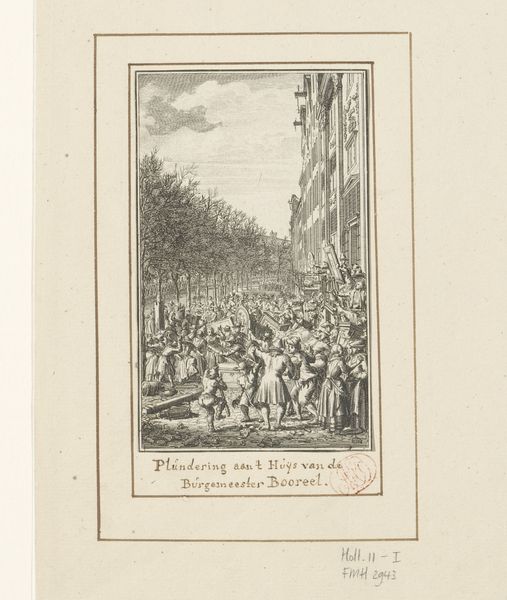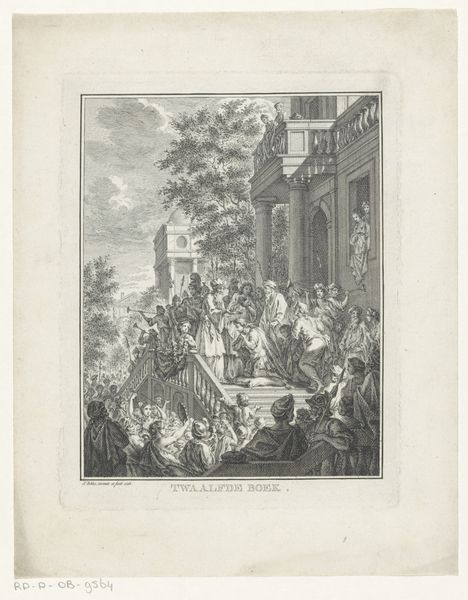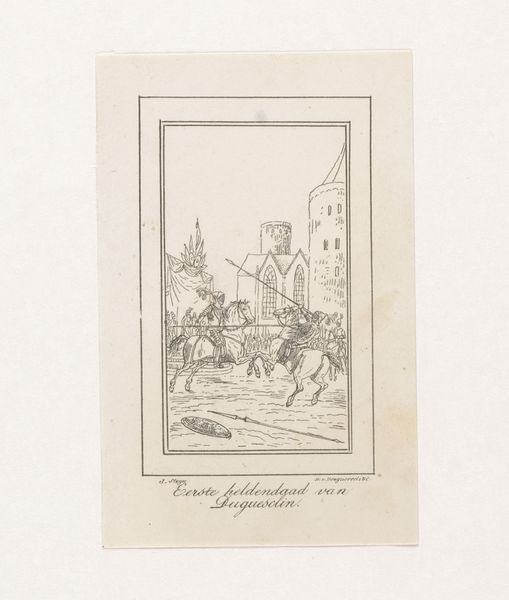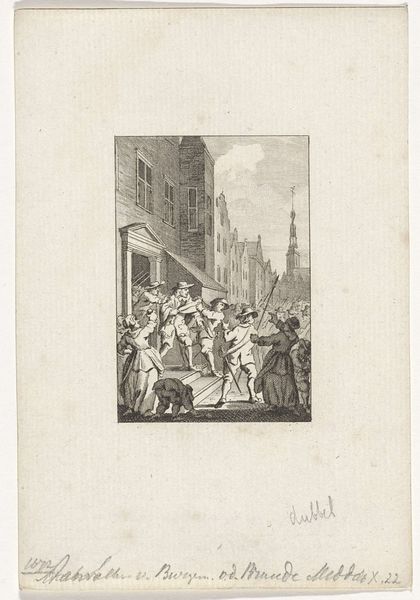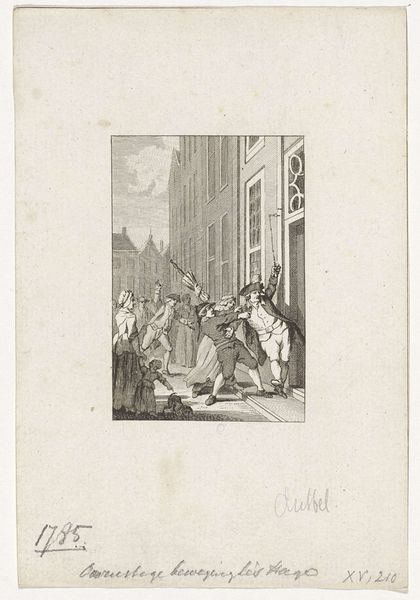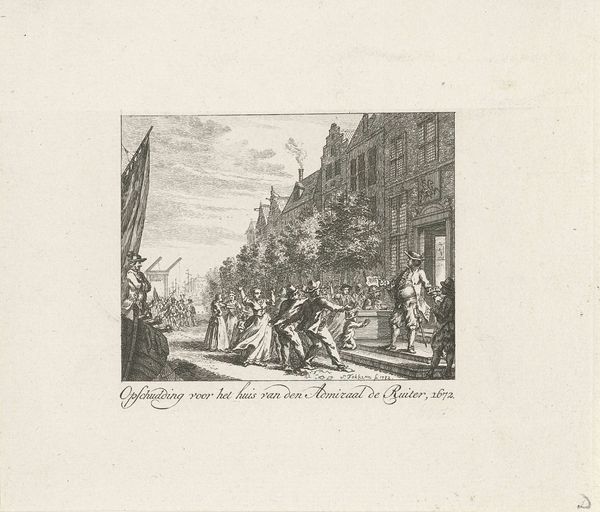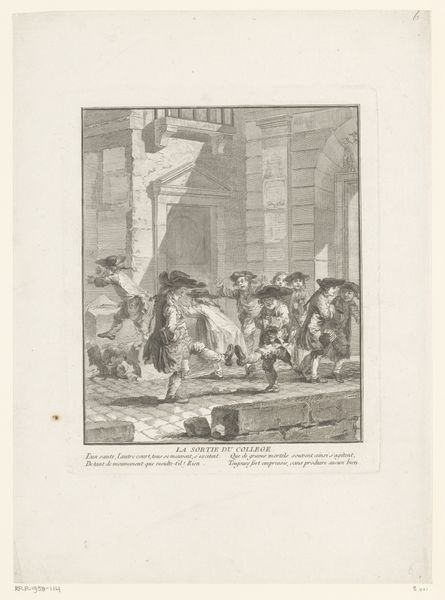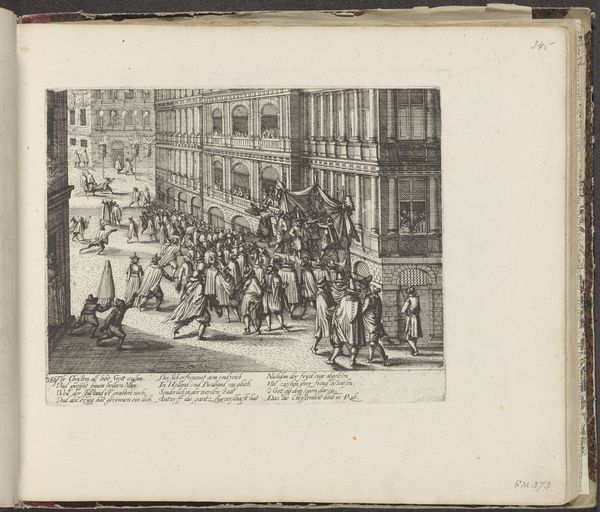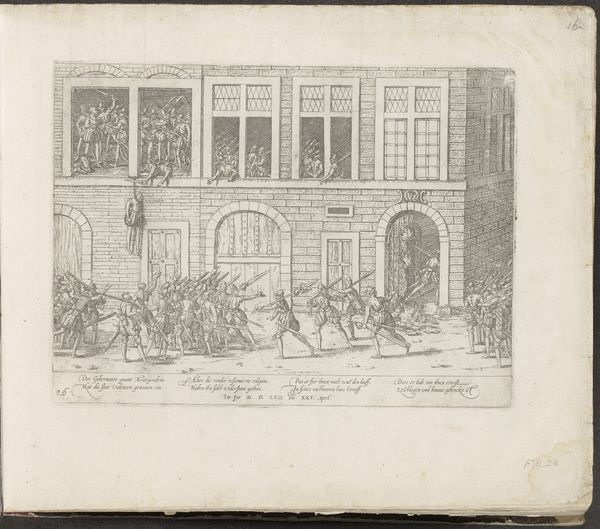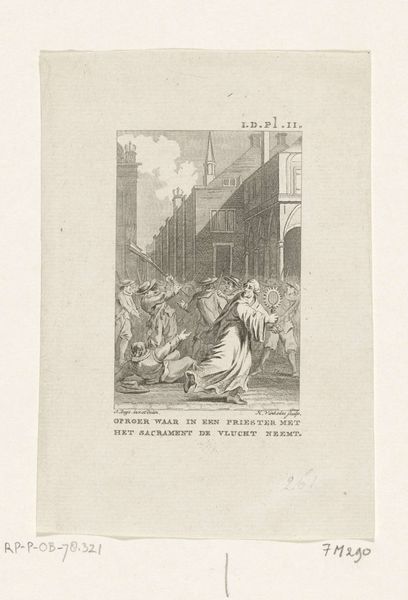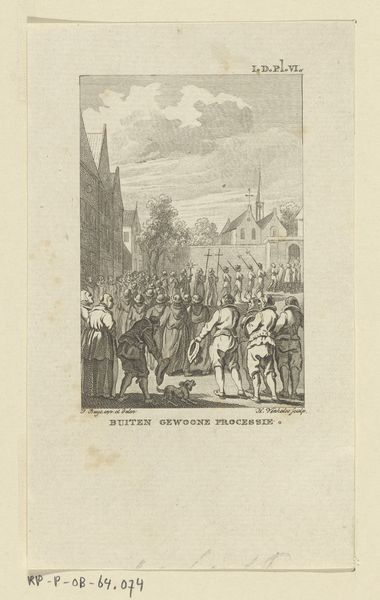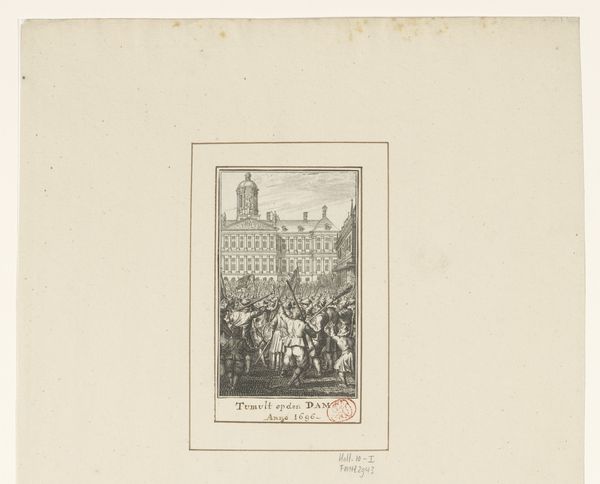
Schutterij verjaagt de oproerkraaiers tijdens het Aansprekersoproer, 1696 1702
0:00
0:00
laurensscherm
Rijksmuseum
print, etching
#
baroque
#
dutch-golden-age
#
ink paper printed
# print
#
etching
#
etching
#
cityscape
#
genre-painting
#
history-painting
Dimensions: height 129 mm, width 79 mm, height 173 mm, width 112 mm
Copyright: Rijks Museum: Open Domain
Editor: Here we have Laurens Scherm's "Schutterij verjaagt de oproerkraaiers tijdens het Aansprekersoproer, 1696," made in 1702. It's an etching printed on paper. The scene feels incredibly dynamic; there’s so much action packed into such a small space. What jumps out at you? Curator: I notice immediately the emphasis on production. The printmaking process – the etching, the paper, the labor involved in creating multiple copies – speaks to a broader culture of consumption and dissemination of information. Look at how the event, a "tumult" according to the inscription, is turned into a commodity, reproducible for a wider audience. Editor: So, the print itself becomes a sort of tool…a means to solidify a narrative, perhaps? Curator: Precisely! And consider the materials: the relatively inexpensive paper, the reproducible etching. This wasn't a precious oil painting destined for a single collector; it was meant to circulate. We have to consider who had access to this print, who purchased it, and what socio-political function this imagery played at the time. Was it aimed at bolstering the position of the victors? What does the actual making of the etching— the time involved, the skill needed— say about the Dutch printmaking trade and it's effect on civic discourse? Editor: That's fascinating, thinking about the accessibility and intended audience shaping the creation of the work. It completely shifts my perception of what it represents. Curator: Indeed. We see the “craft” elevated by its immediate cultural impact. Looking through a materialist lens encourages questioning established notions of what constitutes important "art" at all. Editor: I'm definitely seeing this work, and others, in a completely new light now! Curator: That's what a change in perspective can do. Material conditions are more influential than one might imagine.
Comments
No comments
Be the first to comment and join the conversation on the ultimate creative platform.
